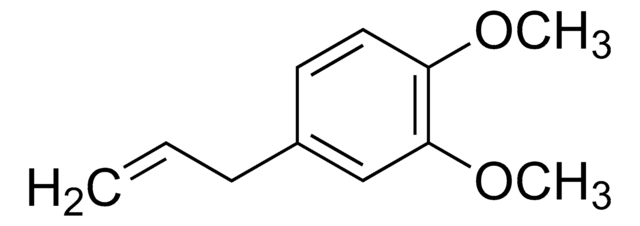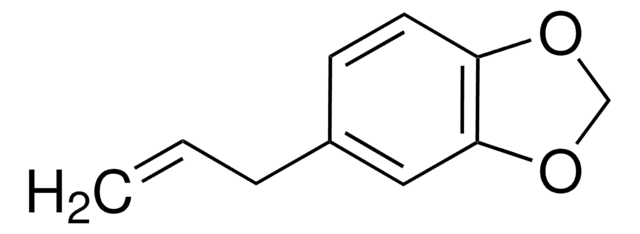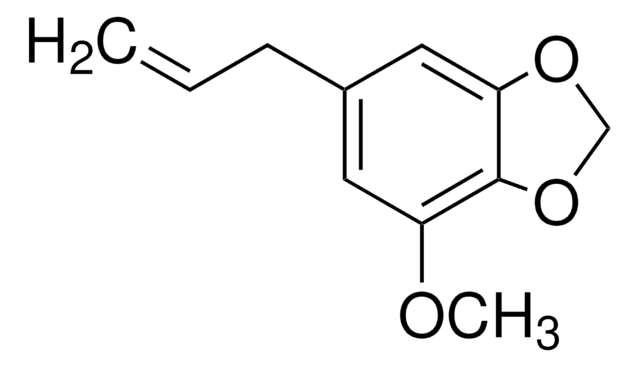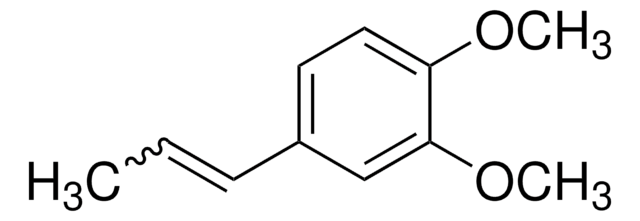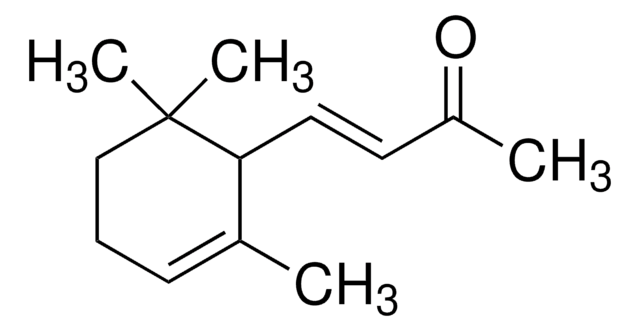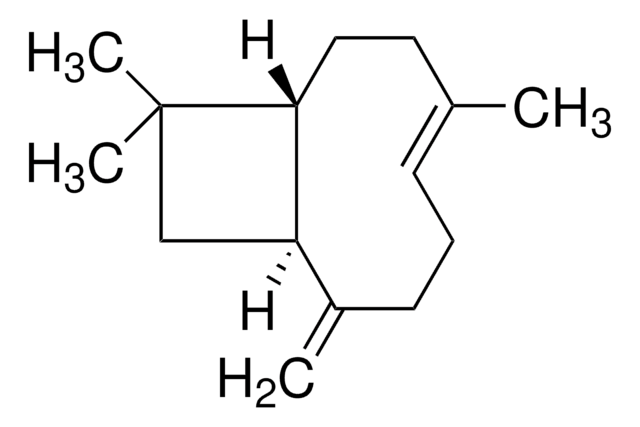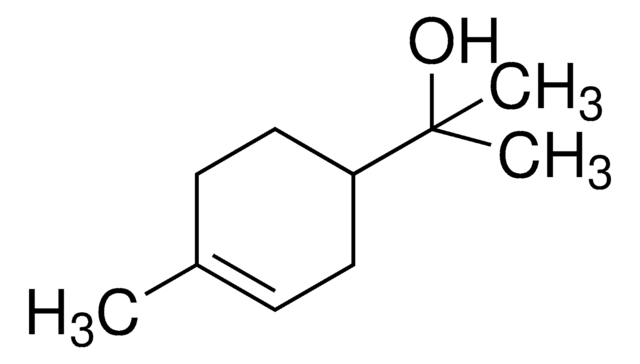Key Documents
04607
Methyl eugenol
analytical standard
Synonim(y):
Eugenol methyl ether, 4-Allyl-1,2-dimethoxybenzene, Eugenyl methyl ether
About This Item
Polecane produkty
klasa czystości
analytical standard
Poziom jakości
Próba
>98% (GC)
okres trwałości
limited shelf life, expiry date on the label
metody
HPLC: suitable
gas chromatography (GC): suitable
współczynnik refrakcji
n20/D 1.534 (lit.)
tw
254-255 °C (lit.)
mp
−4 °C (lit.)
gęstość
1.036 g/mL at 25 °C (lit.)
Zastosowanie
cleaning products
cosmetics
flavors and fragrances
food and beverages
personal care
format
neat
temp. przechowywania
2-8°C
ciąg SMILES
COc1ccc(CC=C)cc1OC
InChI
1S/C11H14O2/c1-4-5-9-6-7-10(12-2)11(8-9)13-3/h4,6-8H,1,5H2,2-3H3
Klucz InChI
ZYEMGPIYFIJGTP-UHFFFAOYSA-N
Szukasz podobnych produktów? Odwiedź Przewodnik dotyczący porównywania produktów
Opis ogólny
Zastosowanie
- Essential oil of Pimenta pseudocaryophyllus using high-performance liquid chromatography (HPLC). The purity of the extracted compound is then determined by gas chromatography coupled to flame ionization detector (GC/FID).
- Stem bark of Cinnamomum zeylanicum Blume using reversed-phase high-performance liquid chromatography (RP-HPLC) with UV-visible detection.
- Rosa hybrida using gas-chromatography coupled to mass spectrometry (GC-MS) technique.
Opakowanie
Inne uwagi
Hasło ostrzegawcze
Warning
Zwroty wskazujące rodzaj zagrożenia
Zwroty wskazujące środki ostrożności
Klasyfikacja zagrożeń
Acute Tox. 4 Oral - Aquatic Chronic 2 - Carc. 2 - Muta. 2
Kod klasy składowania
10 - Combustible liquids
Klasa zagrożenia wodnego (WGK)
WGK 1
Temperatura zapłonu (°F)
230.0 °F - closed cup
Temperatura zapłonu (°C)
110 °C - closed cup
Wybierz jedną z najnowszych wersji:
Masz już ten produkt?
Dokumenty związane z niedawno zakupionymi produktami zostały zamieszczone w Bibliotece dokumentów.
Klienci oglądali również te produkty
Nasz zespół naukowców ma doświadczenie we wszystkich obszarach badań, w tym w naukach przyrodniczych, materiałoznawstwie, syntezie chemicznej, chromatografii, analityce i wielu innych dziedzinach.
Skontaktuj się z zespołem ds. pomocy technicznej